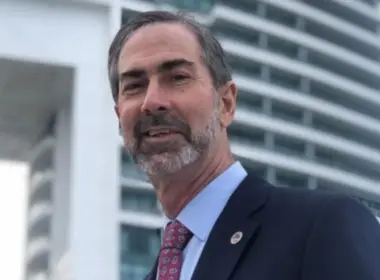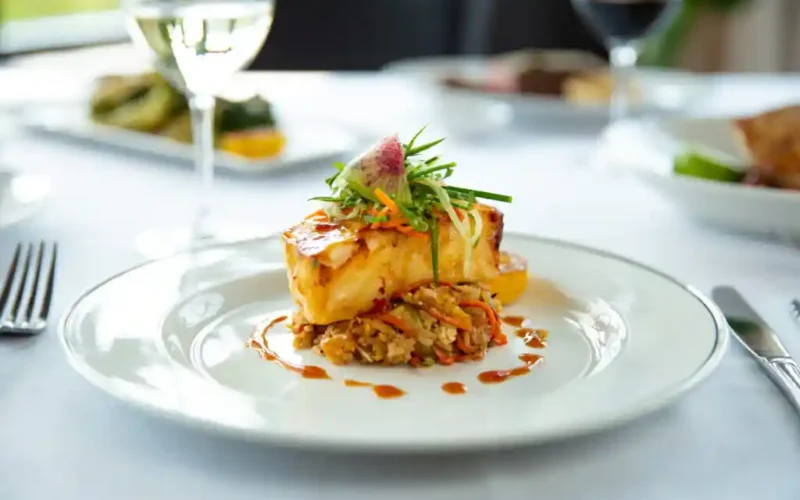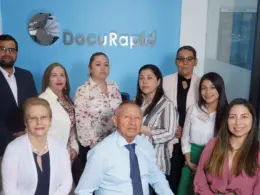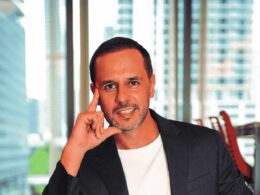Olé’s AI digital platform is upending the life insurance market in Latin America
By JP Faber
Michael Carricarte and his brothers Andrew and Brian were no strangers to the personal insurance markets of Latin America when they came up with their big idea in 2020. They had, after all, worked with their father — Mike Carricarte Sr. — creating one of the largest health and life insurance companies in the Americas. That company, Amedex, rewrote the rules by offering a unique proposition: offering international major medical insurance to VIP clients who wanted access to state-of-the-art medical facitilies in the U.S. Amedex was sold in 2005 to BUPA International for one of the highest multiples at the time.

Now, the three brothers were about to embark on an idea even more revolutionary: offering life insurance to Latin Americans through a mobile digital platform that could issue policies in a matter of hours – or even minutes – rather than weeks, in the same way Rocket Mortgage in the U.S. transformed the home-lending business by offering mortgages online.
“We were sitting at a Starbucks in Mexico City and talking about how insane the health insurance industry was in Latin America,” says Michael, who Oléwas involved with another firm, the Pan American Private Client life insurance company, which he helped launch in 2010 and ran for nine years. “We were talking about what needs to be disrupted out there, what needs to change.”
Having just spent close to a decade understanding how life insurance was sold in Latin America, the brothers came up with a whole new approach. “It’s an incredibly underserved market, and way behind the times in terms of the technology,” Michael says. Indeed, Latin America has one of the lowest penetration rates of health insurance coverage in the world, with only 1.3 percent penetration rate region-wide. In terms of life insurance, only 15 percent of Latin American adults who can afford such policies hold them, compared to 52 percent of U.S. adults.
What Latin America does have, however, is a 70 percent digital adoption rate, “which means we can reach people digitally on a mass scale,” says Michael. And not only did he and his brothers come up with a new AI-backed digital underwriting methodology of providing life insurance via the web or a mobile app, they also decided to flip the entire doom-and-gloom approach to selling policies.
“Normally, if I tell someone I sell life insurance, they don’t want to talk with me. It’s the best way to end a conversation with someone you’re sitting next to on a plane,” Michael says. “That is because most life insurance is sold by fear. Our approach, and our tagline, is ‘living your best life.’ To do that, you need to be protected.”
By the end of 2020, the Carricarte brothers had honed their concept. Using massive amounts of data collected from years of policy underwriting in Latin America – and designing AI-enhanced algorithms based on that data – they developed software that could qualify buyers in about 10 minutes and then issue a policy on the same day.
Also understanding that LatAm life insurance buyers still expect the personal touch of a sales agent, the Carricartes assembled a team of insurance brokers who could work with the customer and close the deal. “Direct to consumer works in the U.S., but not in Latin America, where personal relationships are everything,” says Michael. “We got the 12 largest international brokers in Latin America, people we have known for decades, and had them sit around a table and further the concept…. Normally, they’re fiercely competitive, so this is one of the few times they joined together. We called them the G-12.”
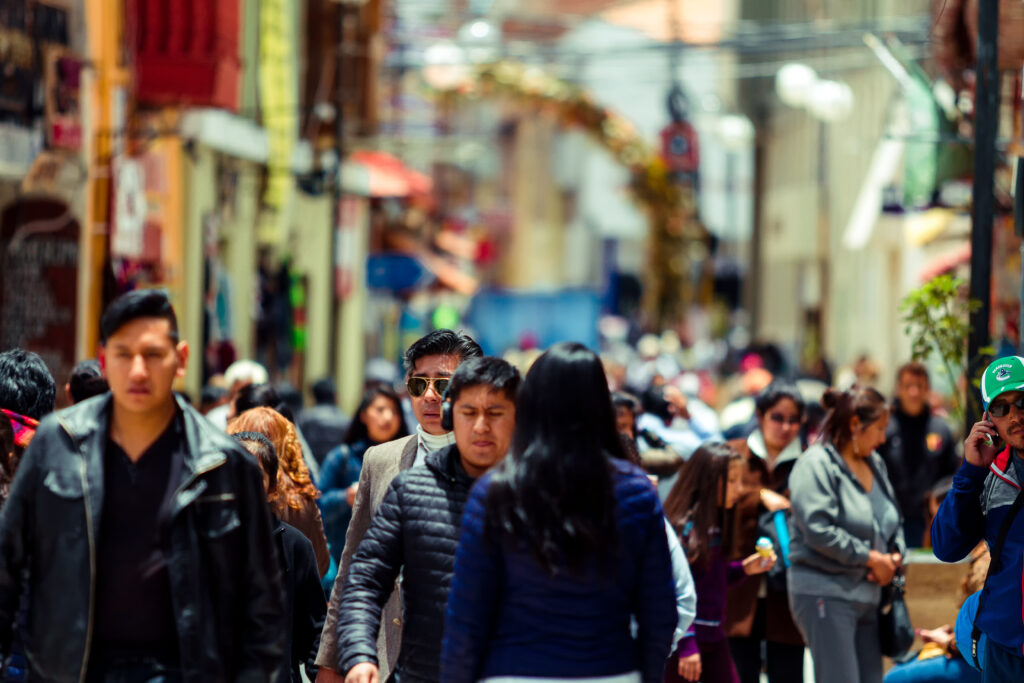
In the end, all 12 agreed to band together to facilitate the launch of the new concept. Collectively, they also agreed to invest in a seed round of $3 million in funding. This gave the participating brokers a gateway to thousands of new policy commissions, with the cache (and convenience) of using cutting-edge technology. It gave the Carricartes distribution and access to a huge base of potential agents and clients.
That meeting took place in early 2021; by December, the Olé Insurance Group had officially launched, making history as the first fully digital insurance product across Latin America. “It was super innovative for the region,” says Michael.
Now into its second year of operation, Olé has members in 30 countries, with over 3,000 policies sold – “and not one single application was filled out by hand, not one went for a medical exam, and 80 percent were approved in less than 24 hours,” Michael says. “This is really life insurance made easy. “This year looks to be gangbusters for Olé, with anticipated revenue projected to grow by 200 percent (to $15 million) and the network of contracted agents to expand from 2,500 to 5,000 by the end of the year.
THE UNDERLYING TECHNOLOGY

As impressive as the numbers are expected to be, the technology behind the company is even more so. Andrew Carricarte, who has his own software company, advises Olé on technology development, strategy, and deployment.
“The technology is based on a combination of things,” he says. “We work with re-insurers, so they have a ton of claims data going back years over a large population. We can draw out where the risk is and combine that with our 40 years of experience [in the Latin marketplace].” What that means, he says, is that “we can know the risk difference between Mexico and Peru and have the ability to customize the rates based on age, country, and amount of coverage.”
Companies that offer blanket pricing across the region for a certain age range, for example, says Andrew, are sure to run into trouble, even if they use a mobile platform. “Some of the ‘insurtech’ approach to growing is taking on all kinds of customers. They grow at any cost and that can mean losses that can crush them. We are more selective, using technology to leverage the customer base and better assess risk.”
In addition to the demographics of age, nationality, education, and income (affluence usually means better health), the Olé AI interface also looks at individual habits as predictors of health. “We look at drinking patterns, extracurricular activities, travel, etc.,” says Andrew. “What is this person’s lifestyle like? Is this person generally healthy or at risk? What medications are they taking?”
More than merely assessing the individual risk factors, however, is Olé’s expansion of the market to include the emerging middle class of Latin America. “We are actually democratizing life insurance to a whole new segment of the population who otherwise would not have bought it due to the complexity and cost of the product,” says Andrew.
The job of integrating this new technology within the company, and making sure it is deployed successfully, falls to brother Brian Carricarte, who is head of operations for Olé. “You’re building all these processes from scratch, recreating an old business in a new way,” he says. “The industry accepted where it was and wasn’t pushing to change their ways. So, part of this is just being bold enough and innovative enough to. The people who have been in the industry – the sellers, the buyers, the re-insurers – need to see things done in a cleaner, faster way… you show them a different way, that you don’t need to fill out an hour-long application… you can do it in 10 minutes.”
As head of operations, Brian is also concerned with maintaining strong relationships with the agents who sell the policies, something that is critical to Olé’s success. “Latin America is caught in the crosshairs of being more consumer-driven but still high contact. You’re seeing high-tech adoption and mobile apps, but there is still a huge alignment with individuals and agencies.”
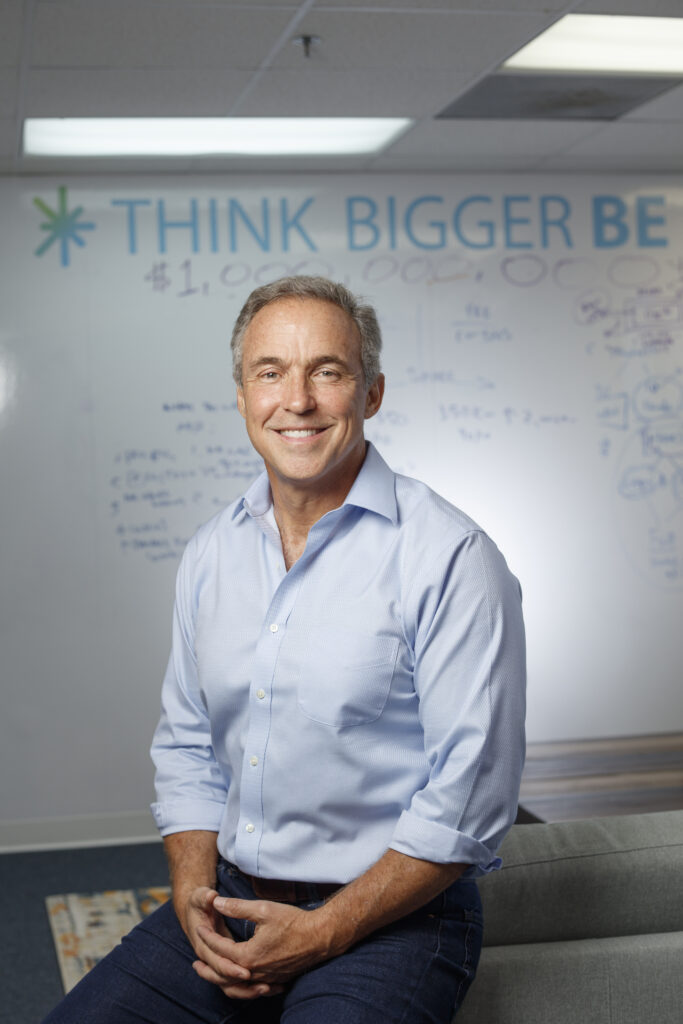
Beyond the mechanics of assembling an array of agents is the Olé philosophy and its innovative marketing approach: the idea that a good life insurance policy is the way “to live your best life.” One of their breakthrough concepts is to sell life insurance to much younger candidates. This allows them to sell the policies at much lower prices, due to less risk, and to reach a much larger audience – a potential of 200 million adults out of 660 million residents in Latin America.
“We are going after the younger people,” says Michael. “Whereas the average age of the insurance agent [in Latin America] is in their 60s, and traditionally the average age of the client is someone in their late 50s, our average client is 40.” What these younger clients get, besides low premiums and a friendly user experience, is peace of mind; the same as for any life insurance client, knowing that if anything happens to them, their families will be cared for. The difference is price. Someone in their 40s can pay $1,200 a year – $100 a month – for $350,000 in coverage.
Olé also sells only term life, which pro- vides coverage for a stipulated period, with no changes in payments or payouts – let’s say $100 a month for 20 years, with a payout of $500,000 in the event of tragedy. Term insurance allows the company to offer substantial discounts, based on their algorithms of predictable life spans.
Bringing the brothers’ years of experience to the industry was nothing to discount, either. “We understand risk and we understand how to underwrite risk,” says Michael. Olé is also a rarity among insurtech companies, which typically act only as distributors; Olé is what’s called a full-stack company, which means they are the insurance company, the distributor, and the underwriter. They are also licensed in Puerto Rico, which allows them to sell their products internationally.
“I am a huge fan [of Olé],” says Lisa Wardlow, an international insurance consultant with 27 years in the industry, including long stints working as a strategy advisor to the world’s largest insurance firms, such as London-based MIS, Farmer’s Life, and Munich RE Group. “[Major insurers] haven’t realized the huge potential of the LatAm market,” she says. “LatAam has an insurance coverage gap, which means they are not getting the necessary products and services that a well-performing nation should have. According to industry analysts, the current market for life insurance in Latin America is about $150 billion. The potential market is closer to $400 billion.
In the past, says Wardlow, “getting life insurance [in Latin America] was like getting a root canal. Olé is changing that…. The thing I like about them is that they are creating something new.” She also touts Olé’s understanding of the newly emerging class of younger, affluent Latin Americans, which the company is targeting.
“In LatAm, the emerging high-net-worth individuals must be served with innovative products,” Wardlow says. “It’s a matter of what they want, rather than what they need, which is what Olé is really out to do – celebrate life with new products. They can issue a policy in less than a day at an affordable price that now brings to this new emerging market products that they want – and that are no longer being sold based on duress.”
Another example of their expanding distribution channels is BCP Global, a digital fintech platform that reaches across the region with business services for the middle class. Backed by Bradesco and Blackrock, BCP offers users the ability to run an investment account, a trading account, or a bank account, etc. “We offer different solutions to the LatAm middle class,” says CEO Mauricio Armando. “We think investing is really important, but protecting your family is super important. The way you can do it with Olé, without having to go to a hospital for medical exams, gives a solution for the middle to upper class of LatAm.”
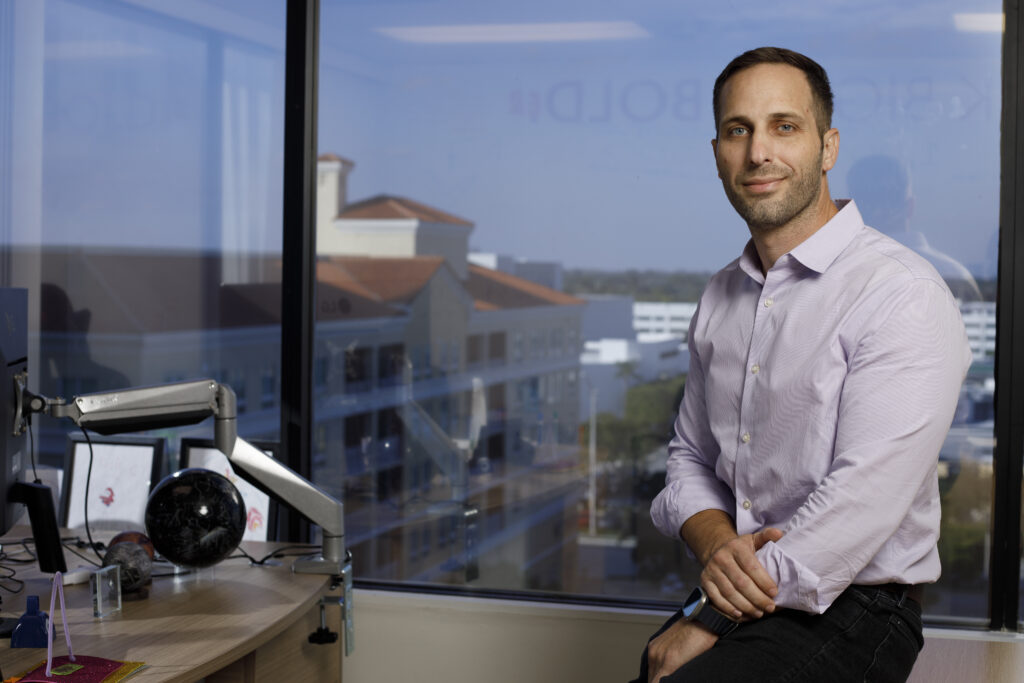
For that reason, BCP carries the Olé app, offering one more channel into the region – in this case to thousands of clients in Colombia, Mexico, Brazil, and Peru. “On the technology side, we are trying different distribution channels, using apps for customers or for agents to quote prices to customers,” says Armando. “It’s all mobile and digital, just unheard of. And with BCP, we have business to business – life insurance as a business product, like the others BCP offers.”
With the Olé model in place and rapidly growing, the team of brothers is already looking for other opportunities. There is the entire world of wellness, of providing basic health insurance and other add-on products that complement the client’s lifestyle. “A lot of our agents are also wealth advisors, and they are asking for potential products like college pre-pay plans,” says Michael.
In the meantime, the model – offering super affordable life insurance to younger clients – is working. “We are finding our sweet spots, like 40-year-olds for $350,000 in coverage. I’ll take that all day long,” Michael says. He offers one perfect example: a 29-year-old Chilean woman, who now holds a $350,000 life insurance policy costing just $19 per month. “She was approved in less than 24 hours, with no medical exam.”
Olé is currently in the process of a $10 million Series A funding round with Mundi Ventures as the lead investor; Mundi is a Spanish VC firm that manages more than 500 million Euros in several funds. They have developed expertise in state-of-the-art insurtech startups and scaleups.
“The insurance industry is characterized by a fragmented value chain and scarce digitalization of processes. This has opened an enormous market for the entrance of tech-enabled insurtechs, such as Olé, challenging or augmenting incumbents,” says Javier Sanchez Gonzalez, an investment associate at Mundi Ventures. Olé plans to use the investment to grow the business and become the leading provider of life insurance to the middle class of Latin America.
As satisfying as that proof of concept is, however, Michael says it’s just part of the personal [read: family] bonus. “How lucky am I? I get to work with my two brothers, innovate another aspect of the insurance industry, and leave a bigger legacy to our dad.”



